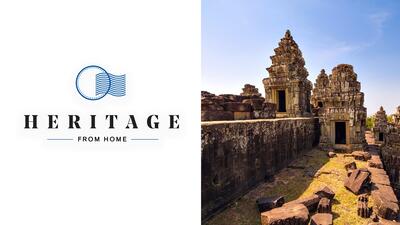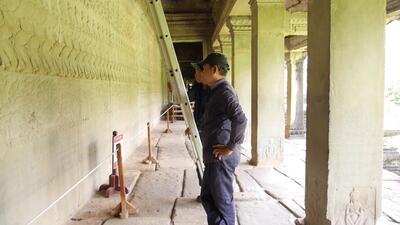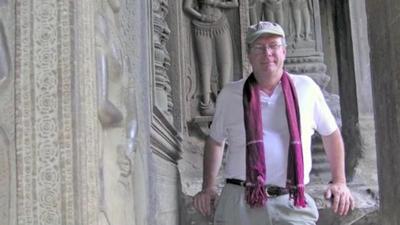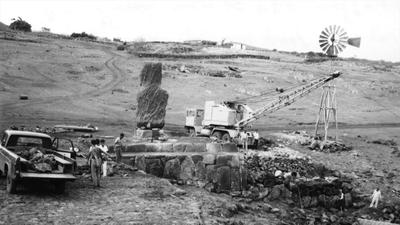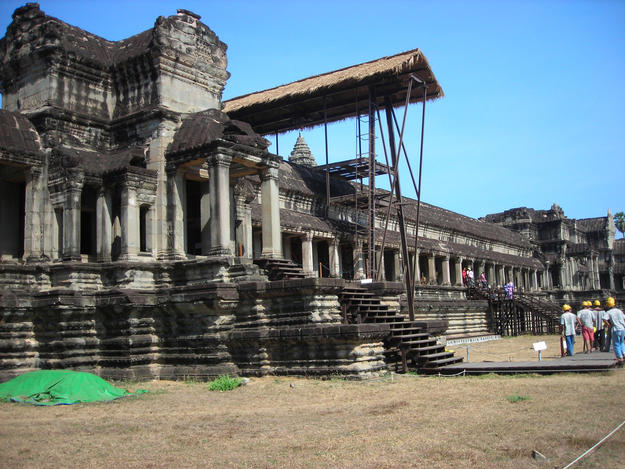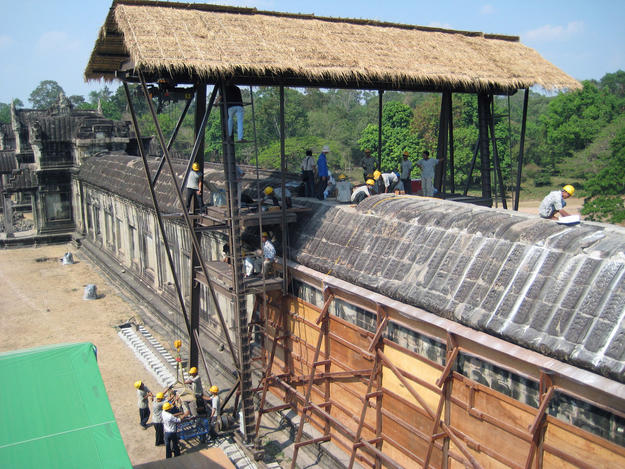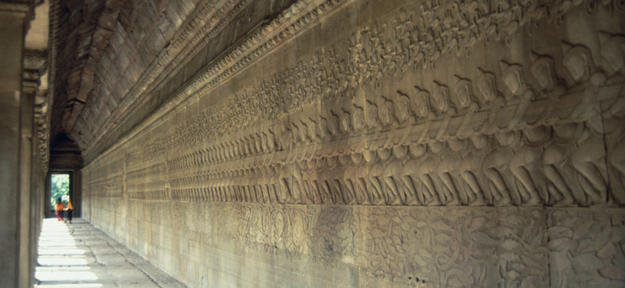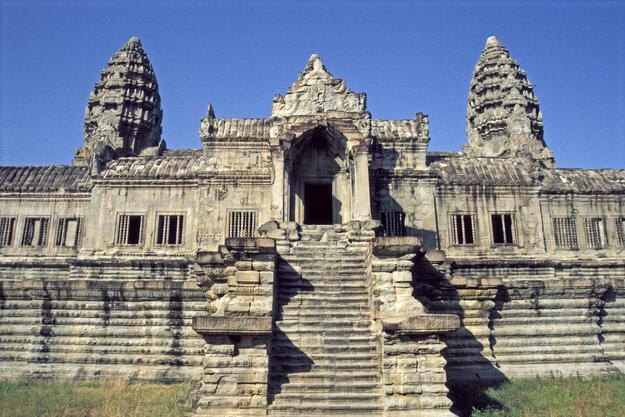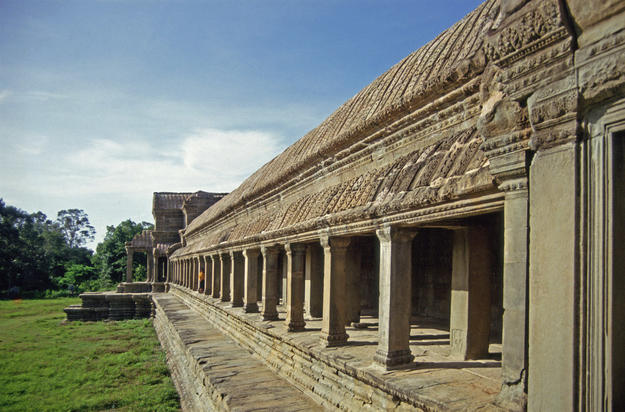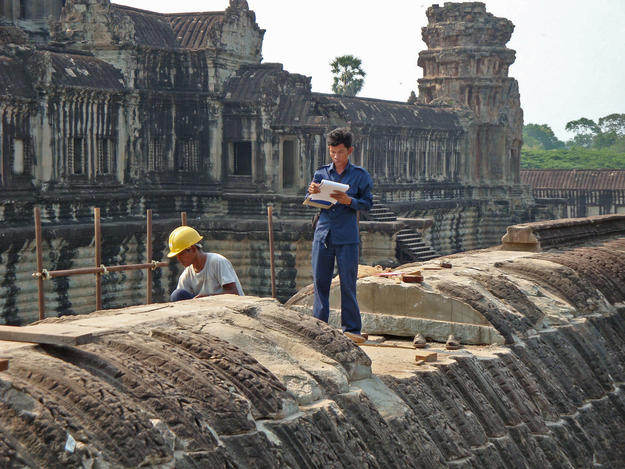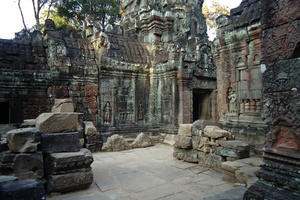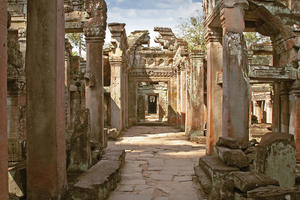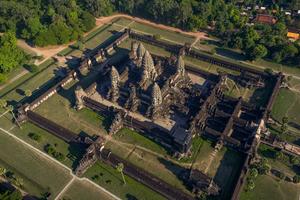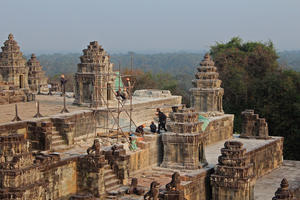Churning of the Ocean of Milk Gallery Conservation Project
Background
The Churning of the Ocean of Milk Gallery, located in the temple complex of Angkor Wat, displays a spectacular 49 meters of intricately sculpted bas-reliefs that are part of a larger ensemble of scenes from the Battle of Kuruksetra, the Ramayana, the 37 Heavens and the 32 Hells, and Angkor Wat’s patron, Suryavarman II (1113 – c.1150) going into battle. The most significant bas-relief in the eyes of the Khmers, located in the Churning of the Ocean of Milk Gallery, portrays devas and asuras in a dramatically rendered tug of war, representing the eternal struggle of good and evil that churns amrit, the elixir of everlasting life, from the primordial ocean.
How We Helped
This venture has been a remarkable training experience for WMF’s Khmer workers, who have collaborated with stone conservators and engineers to develop a sophisticated system for removing stones, working on them, and returning them to the roof. Previous restorations started in the 1960s by the French Ecole Francaise d’Extreme Orient and completed by the Archaeological Survey of India. Starting from 1998, the Gallery was carefully surveyed and documented. WMF focused on using on-site observation and archival research. The results of this campaign are documented in Angkor Wat – Churning of the Ocean of Milk Gallery: Fundamental Structural Issues at the CSM Gallery and Adjacent Towers, Vol. I (May 2005.) A stone-by-stone conditions survey was carried out using interactive GIS-based materials and documentation tools. An environmental monitoring system was designed and installed and mineralogy research was conducted, along with a non-destructive examination of both surface and sub-surface characteristics and conditions using ultrasonic pulse and microwave radar testing. This second campaign of work was reported in Angkor Wat – Churning of the Ocean of Milk Gallery; Technical Analysis and Conservation Planning, Vol. II. (April 2005.)
WMF’s physical intervention was launched in 2006 and included the disassembly of the roof vault stones using a gantry crane, which were carefully documented and consolidated as needed. Special care was used in reinstating the original passive drainage channel and which had partially disappeared over time. A waterproofing lead sheet was used in between blocks during the reassembly phase. In January 2013 a celebration at Angkor Wat commemorated the completion of conservation work on the gallery.
Since then, WMF has focused on the creation of a wooden ceiling which replicates as close as possible the same decorative detail and installation method of the one originally in place. The project will conclude with the addition of a group of finials to the roof of the gallery based on fragments found near the structure.
Why It Matters
Angkor Wat is perhaps the most famous of the temples in the Angkor Archaeological Park and the Churning of the Ocean of Milk represents a crowning achievement of Khmer artistry. Projects such as the roof conservation work demonstrate that all monumental complexes must be looked after by a wide range of specialists and all components must be taken into consideration. The building, the roof, and sculpture together give Angkor Wat its special character and the conservation and stewardship of the site must look at the entire range of materials and conservation challenges. Visitors and worshipers enjoy the experience of coming to Angkor because all these elements have been preserved in their original setting. WMF, APSARA Authority, and the many professionals working together at the site demonstrate that conservation is a collective activity.
Support Angkor Archaeological Park
In January 2024, World Monuments Fund celebrated 35 years of commitment to Angkor Archaeological Park. Our work there continues today thanks to the help of individuals like you. Use this link to direct your gift to WMF’s next stage of work at this irreplaceable site of shared heritage.
 |
 |
World Monuments Fund's work at the Churning of the Ocean of Milk Gallery has been made possible, in part, by The Robert W. Wilson Charitable Trust; International Music and Art Foundation; The Ralph E. Ogden Foundation; and The Pierre and Tana Matisse Foundation.
Videos
